Default and overclocked performance
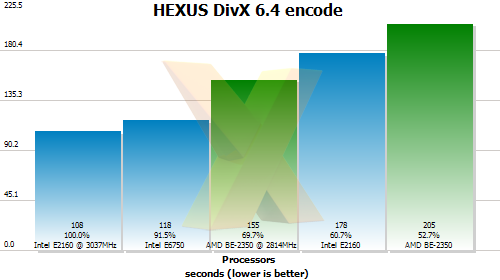
The processors are listed in performance order, with the fastest on the left-hand side and the slowest on the right. What we see is that in terms of DivX encoding the stock-clocked Intel Pentium Dual-Core E2160 is comfortably faster than the AMD Athlon X2 BE-2350.
We know that both processors overclock well, but the Intel's headroom overhead - around 68 per cent - is higher than the 33 per cent increase for the BE-2350 CPU. That translates in to significantly faster performance once the overclocked numbers are taken into account. Indeed, the ~3GHz E2160 shows an Intel Core 2 Duo E6750 a clean pair of heels, which is nice.
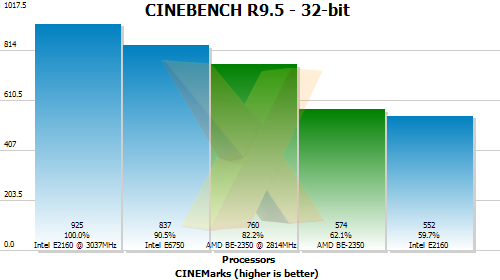
In the multi-core-lovin' CINEBENCH R9.5 we see that the BE-2350 is marginally faster than the E2160 at stock clocks, with both well behind the more-expensive E6750, just as you would expect.
Now, take a look at overclocked performance and it echoes the headroom percentage we talked about just a moment ago. The BE-2350's gain is appreciable, of course, but it falls significantly behind the uber-clocking E2160, which, again, eclipses an E6750. It seems as if a lack of comparative cache - 1MiB vs. 4MiB - isn't undermining overclocked performance thus far.
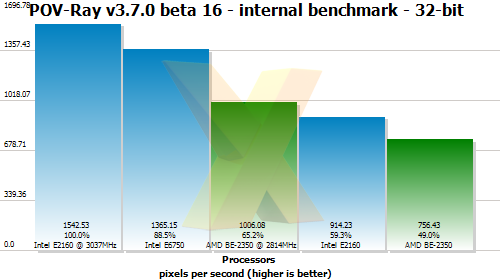
In POV-ray the Core architecture fares better against BE-2350's K8, so overclocked numbers simply reinforce that fact.
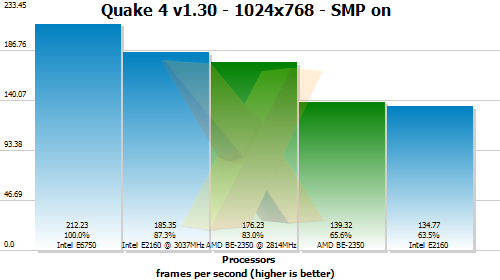
A lack of on-chip L2 cache is finally exposed in multi-threaded Quake 4, where the working dataset fits nicely into the capacious E6750's cache but has to be continually loaded in to the E2160 and BE-2350's. As a result, then, pure clockspeed advantage doesn't make up for cache. We'd need a 3.5GHz-clocked E2160 to eclipse the 2.67GHz E6750's numbers here.
Power-draw musing
Appreciating the fact that we included some high-wattage components in the name of ensuring maximum overclockability, here are the power-draw figures, at the mains, for the two systems in default-clocked and over-clocked modes.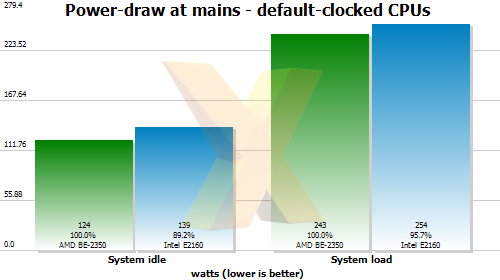
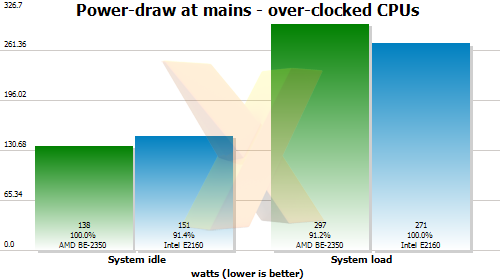
What we see is that the Intel CPU is a little more power-hungry at its default 1.8GHz clockspeed but consumes less when evaluated in overclocked mode. We're a little surprised that the AMD CPU's wattage requirement jumps so much given that there's a minor bump in voltage and a smaller frequency increase than the Intel Pentium Dual-Core E2160.


